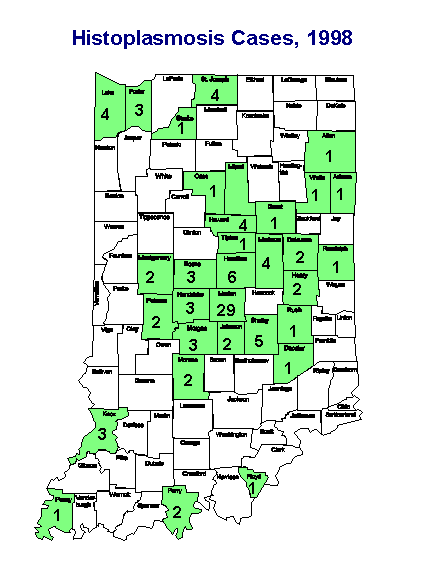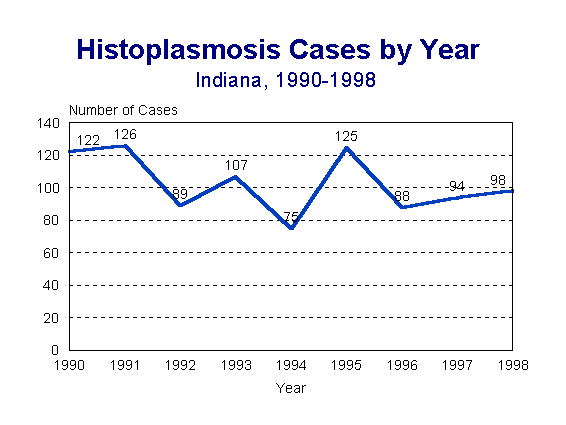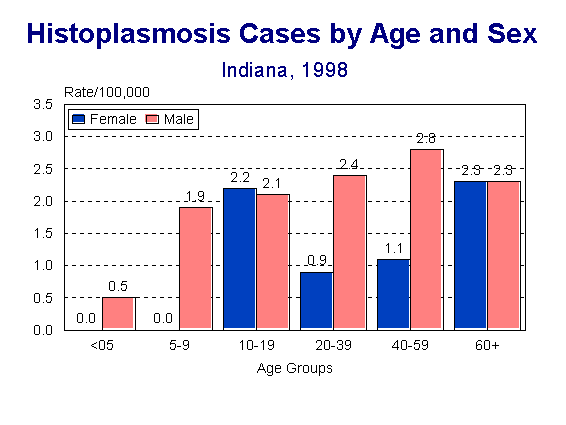
HISTOPLASMOSIS
Cases
= 98Crude incidence rate
= 1.77/100,00Histoplasmosis is caused by the dimorphic fungus Histoplasma capsulatum, which grows as a mold in the soil and as yeast in man and animals. Infection results from inhalation of spores that are disseminated into the atmosphere when soil and or organic materials containing the infectious material is disturbed. Infection is common while overt clinical disease is not. Individuals with preexisting, immune-compromising conditions are at higher risk of developing clinical disease after exposure. The number of spores inhaled and host susceptibility play a role in the development of clinical disease. Clinical disease may vary from a mild respiratory illness to a chronic disseminated disease or a chronic pulmonary disease resembling tuberculosis. Generally, the disease is mild and often unrecognized as histoplasmosis. Rarely does it develop to severe progressive disease.
Indiana is part of the eastern and central United States where exposure and infection are prevalent. In 1998, there were 98 confirmed cases reported for a crude incidence rate of 1.77/100,000. Figure 1 shows the county of residence of reported cases. Marion County reported 30% of the cases, but only has 14% of the population. The crude incidence rate for Marion County was 3.6/100,00.
Figure 1.

Histoplasmosis occurs as individual cases or as a local outbreak. Outbreaks have occurred in Indiana when old bird roost sites have been disturbed during the destruction of buildings or movement of dirt at construction sites. Since 1990, an average of 100 cases of histoplasmosis has been reported yearly. The number of cases by year is showed in Figure 2.
Figure 2.
In 1998, the sex-specific incidence rates indicated that males (2.3 cases/100,000) were almost twice as likely to have disease as females (1.2/100,000). The age-sex specific incidence rates of histoplasmosis in Indiana are presented in Figure 3. Male incidence rates are higher than female rates at all age levels except ages 10-19, and are 2.6 and 2.5 times higher in the 20-39 and 40-59 year groups respectively. The difference in sex-specific rates in the 20-59 year old groups may be in part due to increased risk of occupational exposure as well and the risk of being immunosuppressed due to HIV infections. There were 16 male and 3 female individuals with histoplasmosis identified as being HIV positive, and 18 of those cases were in the 20-39 year old group.
Figure 3.